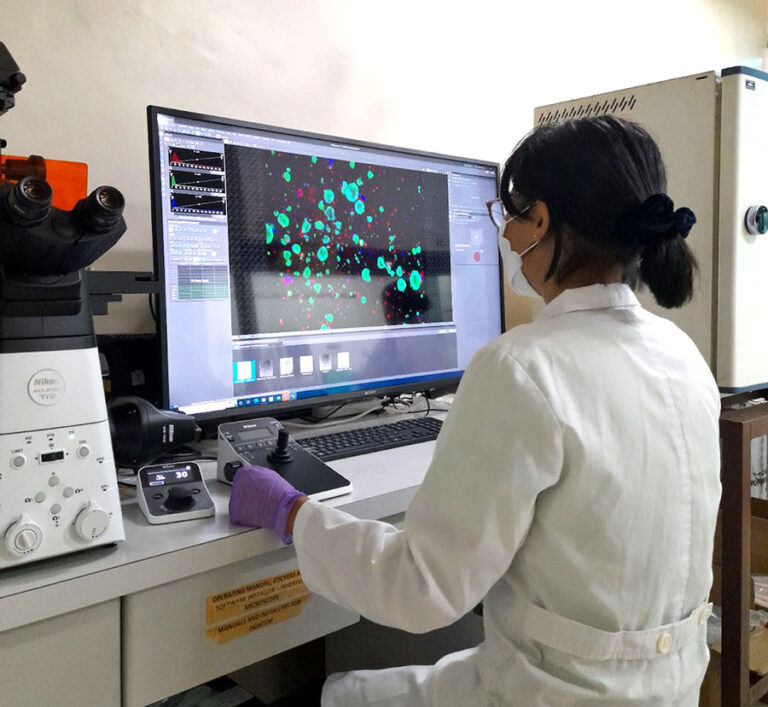If you’ve taken a look at the southeastern sky after midnight recently, you may have noticed what appears to be a red star rising in the east.
But that’s no star. It’s Mars — and it is about to get closer to Earth than it has been in a very long time.
On July 27, the Red Planet will reach “opposition,” a position in its orbit where Earth lies between it and the sun. This occurs about once every 26 months. But this is no ordinary opposition.
Mars and Earth whip around the sun at different speeds: a Martian year is 687 days; Earth’s is 365. And both planets orbit in an ellipse rather than a perfect circle. As a result, at one point during each orbit, Earth and Mars are at their closest point to the sun, known as perihelion.
On July 31, just days after opposition, Mars will also be at its closest approach to Earth, making this a “perihelic opposition.”
So how close is close? Well, in 2003, Mars was roughly 55.8 million kilometres from Earth — the closest it had been in nearly 60,000 years. On July 31, it will be roughly 57.6 million kilometres away.
The 2003 record will stand until Aug. 28, 2287, when Mars will be 55.6 million kilometres away.
The farthest the two planets can get from each other is roughly 400 million kilometres, though the average distance between them is about 225 million kilometres.
Some online articles that made the rounds in 2003 suggested Mars would be so close it would appear as large as the full moon in the sky. This is certainly not the case and never will be, as frustrated astronomers are tired of pointing out.
(As an aside, if Mars were to be that close — roughly 384,000 kilometres away — it would cause extreme tides and alter the orbit of our planet.)
Meanwhile, the brightness of Mars could be affected by a massive dust storm.
The storm began on May 30, and just weeks later enveloped the entire planet. While a dust storm 57 million kilometres away may not seem like a very big deal, NASA has reason to be a little concerned.
In 2004, the space agency launched two rovers, Spirit and Opportunity. While they were only expected to trundle around the Red Planet for 90 sols (Martian days) — the equivalent to 92 days on Earth — they far surpassed that.
Spirit became stuck in 2009, and NASA stopped trying to free it two years later. However, Opportunity has continued to rove around collecting scientific data. But no sunlight in the dust storm means no power generated by Opportunity’s solar panels. NASA hasn’t heard from the rover since June 12.
The last planet-wide dust storm on Mars was in 2007.
The Curiosity rover, NASA’s latest rover, is powered by a nuclear system, so it is unaffected by the storm.
So, if you’re looking for Mars, it rises around 9:30 p.m. in the southeast on July 27, and should appear about five times brighter than normal.
The reason for “should” rather than “will” is the dust storm, which has dimmed Mars slightly in the night sky. However, the storm may be over by the time opposition occurs.
Something to consider as well about this opposition: the moon will be full and Mars will be just beneath it, so the spectacle will be a little washed out by the moon’s brightness.
But you don’t have to wait until July 27 to see Mars. Right now, it rises just before 11 p.m., and will rise about a half hour earlier each week.
And Mars isn’t the only planet visible in the night sky.
Just before the sun sets, you can spot Venus high in the west. It’s the brightest planet and is sometimes mistaken for a plane or even a UFO.
For the next few weeks you’ll also find the largest planet in our solar system, Jupiter, in the south. It’s the second-brightest planet in the sky — until Mars outshines it later this month.
Finally, you can find Saturn rising in the southeast after sunset.( · CBC News)
Link: http://www.cbc.ca/news/technology/mars-closest-earth-1.4733211



